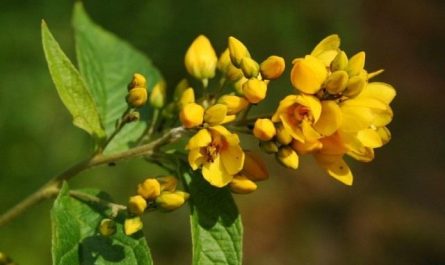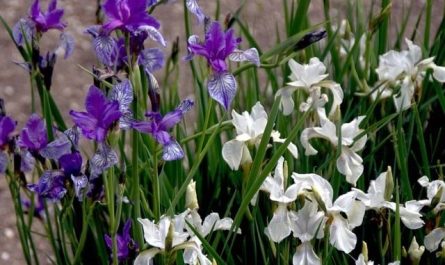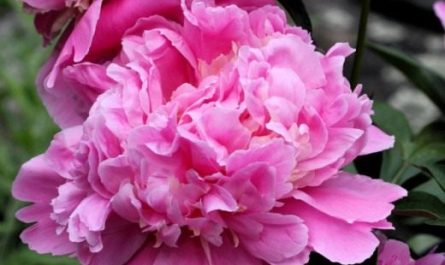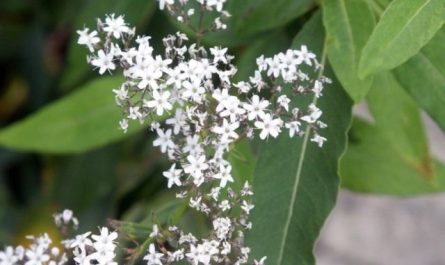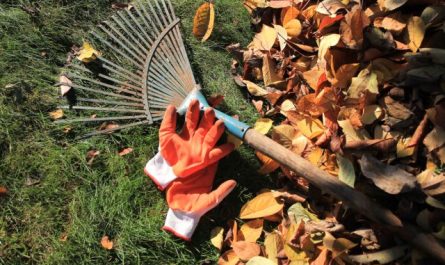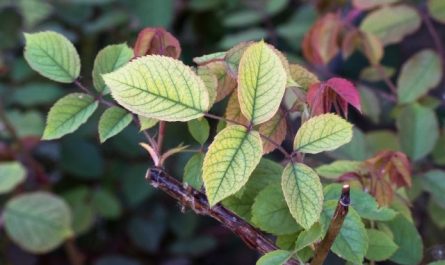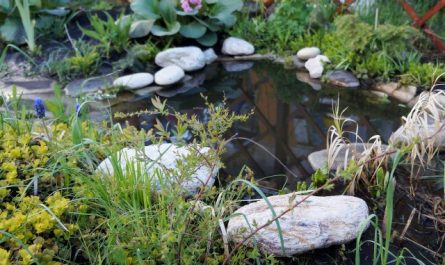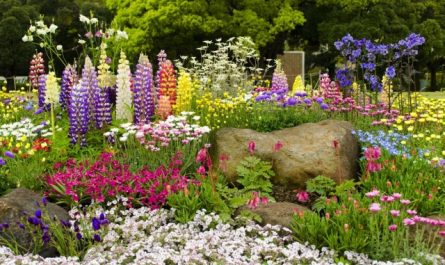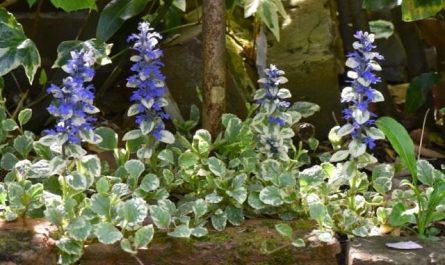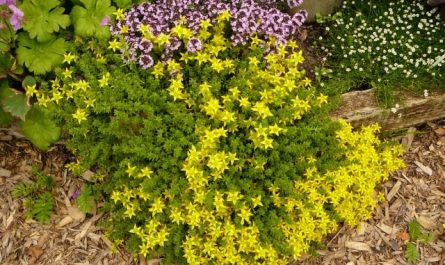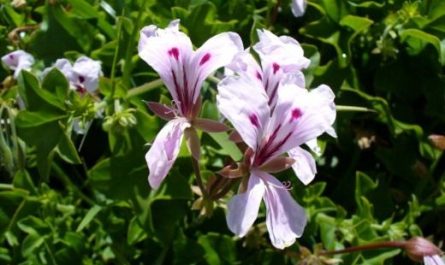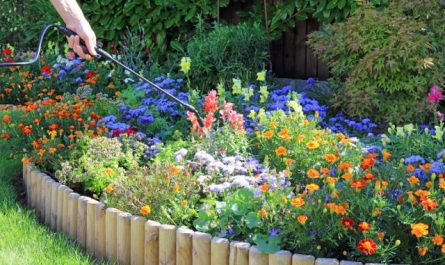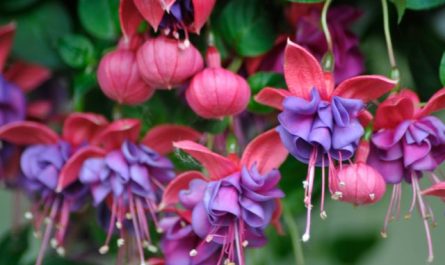Owners of country plots often consider the shady location of the garden a real challenge: it is a problem for gardening, and the atmosphere may seem gloomy. And even a small secluded corner is sometimes perceived as an eyesore. However, it is not at all difficult to change such a place beyond recognition. And the easiest way is to highlight the shadow using garden plants. In this way, we can influence not only the appearance, but also the spirit and atmosphere, and even the perception of space. Plus, it will be possible to use a seemingly useless piece of land sensibly. Today we will talk about what decorative foliage plants in white and silver tones can be used to enliven a corner in the shade.

Woody plants
Deren
Dogwood, especially white, can be seen more and more often in both urban and private landscaping. It is a fairly large shrub with a dense crown and brightly colored shoots (especially in white and blood-red dogwood). Dogwood blooms with white shields in early summer and sometimes again, but more weakly, in early autumn. White/bluish or dark blue fruits are inedible. They remain until frost.
Grows in any soil, although it prefers moist, loose loams/sandy loams of slightly acidic reaction. White dogwood even tolerates temporary alkalization and over-wetting. In general, the bush is unpretentious, winter-hardy, does not get sick, but needs regular pruning to avoid the formation of thickets and to preserve the intensity of the shoots’ color.
Varieties of white dogwood (Cornus alba):
- ‘Elegantissima’ is the most popular variety, up to 3 m in height and diameter, with green leaves having a wide creamy-white border and a few strokes, shoots are bright red.
- ‘Ivory Halo’ is a 2×3,5m cultivar with red-brown upright shoots and green leaves with a white border.
- ‘Sibirica Variegata’ – similar to ‘Elegantissima’, but more compact (2×2 m), with a brighter border and purple autumn colour.
- ‘Caranthus’ is a dogwood up to 3 m high with glaucous leaves, white edges and red-violet autumn colouring.

Varieties of Cornus sericea:
- ‘White Gold’ is a large (3×6 m) popular variety with a wide light border; in winter the shoots are painted in bright olive shades.

Cornus alternifolia varieties:
- ‘Silver Giant’ is a large cultivar up to 4 m tall with unusually arranged horizontal branches and small white-edged leaves.
- ‘Argentheomarginata’ is another variegated cultivar with a wide white edge.

Note. Horizontal branches and pronounced tiering are characteristic features of the alternate-leaved dogwood, which looks more like a small tree than a bush.
Willow holly-leaved
Willows are generally light-loving, but, as practice shows, some grow well in partial shade. One of the most popular in design, the whole-leaved willow (salix integra), is one of them. This is a low tree or shrub native to the Far East. It grows in almost any wet soil, and tolerates temporary waterlogging. The species is more winter-hardy, but on condition that it is planted in a place protected from the wind, and varieties overwinter well in the middle zone.
Whole-leaved willow (salix integra):
- ‘Hakuro-nishiki’ is a shrub or small tree, often grown on a standard; the white-pink young growth gives the appearance of a continuous bloom, with the spots and strokes on the leaves becoming white with age.
- ‘Flamingo’ is an improved version of ‘Hakuro-nishiki’ with a more spreading crown and a brighter pink tint to the young leaves, which remains throughout the season and is not subject to fading in full sun.

Black elderberry
Black elderberry (sambucus nigra) is not the most winter-hardy elderberry species, but it is definitely the most spectacular. It can boast the largest number of decorative-deciduous cultivars, including white-variegated ones. In the conditions of the middle zone, imported planting material can freeze severely, but domestic ones are generally winter-hardy.

Grows on various soils, preferring moist fertile loose loams with a neutral reaction. Tolerates salinization and temporary waterlogging well. Blooms in June-July with white or pink (depending on the variety) numerous shields, on which black edible fruits ripen by autumn.
Black elderberry (sambucus nigra):
- ‘Pulverulenta’ is a dwarf, slow-growing variety 1×1 m with a contrasting white pattern of spots and specks on the leaves.
- ‘Naomi’ is a large shrub up to 2,5 m tall with a wide creamy border on the leaves.
- ‘Variegata’ is an elderberry up to 3 m high and up to 2 m in diameter (the further north the region, the more compact it is), distinguished by a yellowish-cream border, suitable for light partial shade.
Maple
Unlike many shrubs, which naturally grow in partial shade under the canopy of taller plants, most trees need a lot of sun. But there are exceptions. The greatest variety of variegated varieties is found among all sorts of “Japanese” maples, which are not winter-hardy enough in the middle zone. Therefore, it is worth paying attention to more stable species that have variegated forms.
The most popular in landscaping and the most shade-tolerant is the Norway maple (Acer platanoides). It requires fertile, moist sandy loams/loams with a reaction from slightly acidic to slightly alkaline. It does not tolerate stagnant water, over-compaction and soil salinization. The variegated variety ‘Drummondii’ is distinguished by a wide creamy-white stripe along the edge of the leaf, with a pink tint when blooming. In adulthood, it has a rounded crown and grows up to 10-12 m.

Box ash (Acer negundo) is considered almost a weed, because it actively spreads by seeds, so it is better to plant male specimens. It grows well in partial shade. Any soil is suitable. It tolerates high groundwater levels and alkalization.

The ‘Variegatum’ variety has a bright white contrasting border and spots, grows as a large bush or tree 5-7 m high. The spectacular decorative ‘Flamingo’ variety with white-pink border and spots is more thermophilic and can freeze above the snow level, but quickly grows back and is recommended as a coppice crop. In favorable conditions, this tree is 5×3 m.
Virginia creeper quinquefolia ‘Star Showers’
Virginia creeper is one of the most powerful and indestructible vines, widespread throughout our country. Winter-hardy and shade-tolerant. Grows in almost any soil, but prefers moderately moist loose sandy loams/loams of neutral or slightly acidic reaction. The variety “Star Showers” (‘Star Showers’) is decorative and less spreading compared to the species plant (up to 6 m) with contrasting white-green leaves with a random pattern of strokes, spots and dots.

